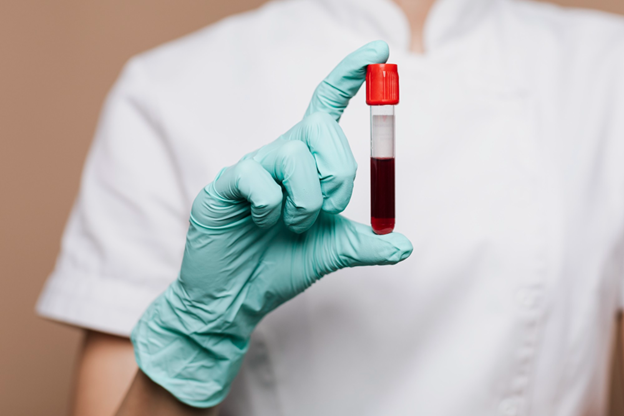What is an Iron Studies Test?
The Iron Studies Test is a comprehensive blood test used to assess the levels of iron in your body and to evaluate how well your body is storing and using iron. Iron is a crucial mineral needed to produce hemoglobin, the protein in red blood cells that carries oxygen throughout the body. Iron also plays an essential role in many metabolic processes, making it vital for maintaining overall health.
An iron study typically includes a group of tests that can help diagnose conditions related to iron deficiencies or iron overload. The test can be used to assess anemia, detect iron deficiencies, or identify conditions like hemochromatosis, which involves excessive iron accumulation in the body.
Key Components of the Iron Studies Test
An iron studies test typically consists of the following components:
- Serum Iron: This measures the amount of iron circulating in your blood. Low serum iron levels are often an indicator of iron deficiency anemia.
- Ferritin: Ferritin is a protein that stores iron in your body. Measuring ferritin levels can help assess the amount of stored iron in your body. Low ferritin levels suggest iron depletion, while high ferritin levels could indicate iron overload or inflammation.
- Total Iron-Binding Capacity (TIBC): TIBC measures the blood’s capacity to bind to iron. High TIBC levels may indicate iron deficiency, as your body tries to compensate for low iron levels by producing more iron-binding proteins.
- Transferrin Saturation: Transferrin is a protein that binds to iron and carries it through the bloodstream. Transferrin saturation refers to the percentage of transferrin that is bound with iron. This value is typically calculated using serum iron and TIBC. A low transferrin saturation indicates iron deficiency.
- Unsaturated Iron-Binding Capacity (UIBC): UIBC measures the amount of transferrin that is not bound to iron. It complements TIBC and helps provide a more complete picture of the body’s iron status.
Why is an Iron Studies Test Important?
Iron is crucial for the production of hemoglobin and the transport of oxygen in your blood. Without enough iron, your body cannot produce enough healthy red blood cells, which can lead to iron deficiency anemia. Symptoms of iron deficiency anemia include fatigue, weakness, pale skin, dizziness, and shortness of breath.
On the other hand, too much iron in the body can also lead to serious health issues. Excessive iron storage in organs like the liver, heart, and pancreas can lead to conditions like hemochromatosis, which can cause organ damage. Hemochromatosis is often hereditary and can go undiagnosed for years because its symptoms are similar to other conditions.
An iron studies test helps doctors monitor iron levels in patients who are at risk of either deficiency or overload. It is commonly recommended for individuals with the following conditions:
- Anemia: If a person has symptoms of anemia, such as fatigue or weakness, an iron studies test may be used to confirm a diagnosis.
- Chronic Conditions: Conditions such as chronic kidney disease, inflammatory bowel disease (IBD), or heart failure can cause iron imbalances.
- Hemochromatosis: If iron overload is suspected, the test can help confirm a diagnosis of hemochromatosis.
- Poor Diet: People with poor dietary intake or absorption of iron (e.g., vegetarians or those with malabsorption issues) may be at risk for iron deficiency.
When Should You Get an Iron Studies Test?
Your doctor may recommend an iron studies test if you exhibit symptoms of either iron deficiency or excess. Some common symptoms that may prompt a test include:
Symptoms of Iron Deficiency (Anemia)
- Fatigue and weakness
- Pale or dull skin
- Shortness of breath, especially after mild physical activity
- Dizziness or lightheadedness
- Headaches
- Cold hands and feet
- Brittle nails or hair loss
Symptoms of Iron Overload (Hemochromatosis)
- Joint pain
- Abdominal pain
- Liver damage or liver enlargement
- Heart problems such as arrhythmia
- Diabetes
- Skin darkening (bronzing)
What Do the Results Mean?
Once the test results are in, they will be interpreted based on the normal ranges for each component. Here is what different results could indicate:
Low Iron Levels:
- Serum Iron: Low levels may indicate iron deficiency anemia.
- Ferritin: Low ferritin levels indicate depleted iron stores and are a hallmark of iron deficiency anemia.
- TIBC: High TIBC may suggest iron deficiency as your body tries to increase its ability to absorb iron.
- Transferrin Saturation: A low transferrin saturation means less iron is available in the bloodstream, indicating deficiency.
High Iron Levels:
- Serum Iron: High serum iron levels could indicate iron overload, hemochromatosis, or liver disease.
- Ferritin: High ferritin levels can indicate excess iron in the body or inflammation. In the case of hemochromatosis, ferritin levels are often elevated due to iron accumulation.
- TIBC: Low TIBC levels suggest that the body has adequate or high iron levels.
- Transferrin Saturation: High transferrin saturation suggests too much iron in the body and may indicate iron overload disorders.
Treatment Options for Iron Imbalances
If your test results indicate an iron deficiency or overload, your doctor will recommend treatment options based on the severity and underlying cause of the imbalance.
Iron Deficiency:
- Iron Supplements: Oral iron supplements are often prescribed to replenish iron levels in the body. They may be taken for several months, depending on the severity of the deficiency.
- Dietary Changes: Increasing dietary intake of iron-rich foods such as red meat, poultry, fish, lentils, and spinach can help restore iron levels. Foods rich in vitamin C, like citrus fruits, can help with iron absorption.
- Intravenous Iron: In some cases, intravenous (IV) iron may be necessary for individuals who cannot tolerate oral supplements or have more severe deficiencies.
Iron Overload:
- Phlebotomy: Regular blood removal (similar to blood donation) can help lower iron levels in individuals with hemochromatosis.
- Iron Chelators: These medications help the body remove excess iron and prevent organ damage.
Conclusion
An iron studies test is a valuable diagnostic tool that helps detect both iron deficiencies and iron overload, two conditions that can significantly impact your overall health. By assessing serum iron, ferritin, TIBC, transferrin saturation, and UIBC, this test gives your healthcare provider a comprehensive understanding of your iron status. Timely detection of any iron imbalances allows for prompt treatment and prevents complications.
If you experience any symptoms related to low or high iron levels, it’s important to consult with your healthcare provider. Early intervention can help restore balance and improve your quality of life.
Book your test today at Doctor’s diagnostics!

